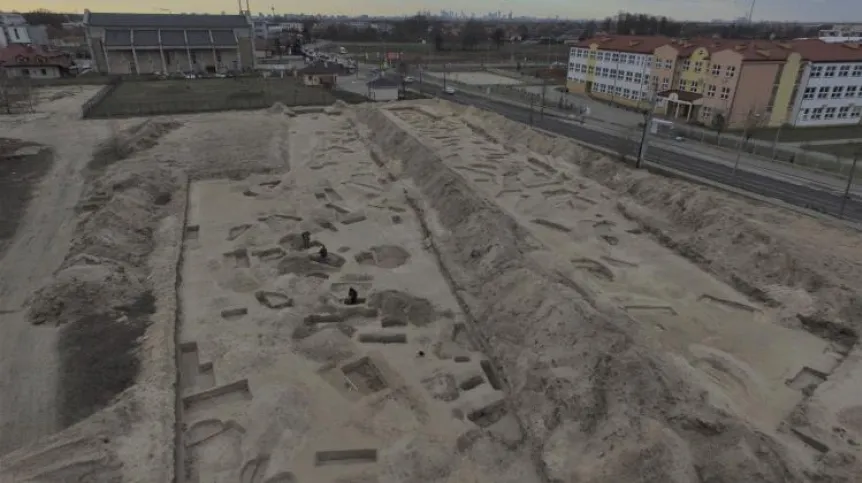
The remains of a 3,000-year-old settlement covering almost half a hectare and with over 1,000 artefacts have been discovered in Warsaw’s Białołęka district.
Among the approximately 1,500 artefacts from the Lusatian culture, one of the most interesting finds is a strainer vessel similar to a colander, which could have been used to make curd and cheese.
A spokesman for the Ab Terra Foundation which is carrying out the research said: “We expected to discover traces of a small seasonal camp, but it turned out that we found the 3,000-year-old remains of a large settlement of the Lusatian culture (from the late Bronze Age).
“This settlement was associated with a small watercourse that is now regulated. But in prehistory the stream ran several dozen meters closer to the present research area.
“Traces of the oxbow lake and high level of groundwater were captured in the form of clear geological traces. There was probably a production part of the settlement in the studied area, while the residential part was probably a short distance away, but unfortunately already outside the investment area.”
The research was commissioned by the City of Warsaw Białołęka district as an archaeological rescue mission ahead of the construction of a swimming pool after fragments of prehistoric ceramics were discovered.
Most of the objects recovered during the research are ceramic tiles, while others include wooden, leather and other items which have decayed.
The Ab Terra Foundation said: “With considerable care and effort, we extract tiny fragments, clean and glue together ceramic dishes for everyday use. A very interesting find is, for example, the sieve vessel. It is similar to a modern colander, only it was probably used to make curd and cheese 2,500 years ago. The difference lies in the material from which it was made, namely, it was fired from clay.”
The Foundation added that as the method of producing curd from milk has not changed to this day, “Since the hearths in the southern part of the settlement seem to be temporary, it should be assumed that the area of current research was not used for consumption, but rather for the production of products for the population of the nearby residential part.”
In addition to the hearths, researchers discovered several hundred archaeological objects, such as the remains of post-holes and storage pits. The latter could be called storage cellars today.
The Foundation’s spokesman said: “At the time when the fortified settlement in Biskupin was being developed in Kujawy, a rich settlement of the same Lusatian culture was also developing in Warsaw's Białołęka. In the vicinity of Ostródzka Street, there are also many other archaeological sites, such as the remains of a large Lusatian settlement, 1.5 km north. It is important to study these areas before they are covered with concrete and it is also important that the knowledge about them reaches the residents of Białołęka.”
In addition to the discovery of traces from the Lusatian population, researchers also found traces from other periods including the Trzciniec culture from the early Bronze Age, and traces of activities from the Second World War. But it is the discovery of the Lusatian settlement that has the greatest impact on learning about the history of the area.
Researchers are now processing the excavated finds, preparing documentation and materials for publication, which will shed light on the prehistory of this part of Mazovia.
PAP - Science in Poland
ekr/ agt/ kap/
tr. RL













